The conference fosters in-depth technical-scientific presentations as well as inspiring talks by experts from industry and academia. The following speakers have confirmed their participation in the conference to deliver keynotes and invited talks on big data topics:
Tim Bell (CERN), Erik Elmroth (Umeå University), SK Reddy (Hexagon), Philippe Cudré-Mauroux (eXascale) and Dirk Helbing (ETH Zurich).
You may also be interested in speakers on utility and cloud computing.
| Speaker and Bio | Topic and Abstract | |
|---|---|---|
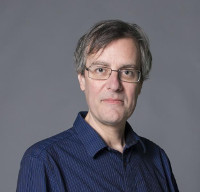
|
BDCAT Keynote: Tim Bell, CERN. Tim is responsible for the group at CERN, the European Laboratory for Particle Physics, which manages the compute infrastructure for 13,000 physicists around the world to support fundamental research. He previously worked as a Unix kernel developer at IBM along with managing large scale Unix production deployments and services for Deutsche Bank in Europe. He is an elected member of the OpenStack Foundation board of directors since 2012. | Clouds at CERN: a 5 year perspective. Driven by the computing needs of the Large Hadron Collider and other CERN experiments, a new approach to managing compute resources was deployed in 2013 based on a cloud computing infrastructure and agile methodologies. This talk will review the experiences of using cloud computing for scientific research and administrative computing, lessons learnt, the current status and the outlook for the next years. |
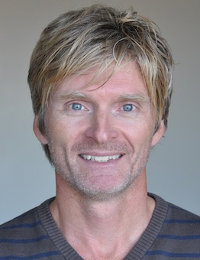
|
BDCAT Keynote: Erik Elmroth, Umeå University. Erik Elmroth is Professor in Computing Science at Umeå University. He has been Head and Deputy Head of the Department of Computing Science for ten years. He is leading the Umeå University research on distributed systems, focusing on theory, algorithms, and systems for the autonomous management of ICT resources, spanning from individual servers to large scale cloud datacenters, federated clouds, highly distributed edge clouds, and software-defined infrastructures. Elmroth's research group participates frequently in large-scale national and international collaborations such as eSSENCE (a long-term Swedish strategic eScience collaboration), the EU FP7 and H2020 projects RESERVOIR, OPTIMIS, VISION Cloud, CACTOS, ORBIT, RECAP, and ACTiCLOUD, the EU networks ACROSS and AAPELE, as well as the local industry-focused ICT research within the UMIT research laboratory. Elmroth is leading the Umeå University activities in the 1.8 billion SEK Wallenberg Autonomous Systems Program (WASP), partly as member of the WASP Research Strategy Group. He is also leading an 8 postdoc project in autonomous systems funded by the Kempe Foundations. A particular high-light is being the principal investigator for Cloud Control, which is a framework project funded by the Swedish Research Council, taking a control theoretic approach to fundamental problems for autonomous cloud datacenter management systems. | What just went wrong, where and why? Or did it? - Autonomous anomaly detection for a connected world. To manage the increasingly larger and more complex applications on equally large and complex clouds, mobile edge clouds, and other emerging infrastructures, we increasingly rely on automation and (semi-)autonomous systems. This is done not only to improve their availability, reliability, and performance but also to reduce cost and manual labor. The operation is largely relying on planning and feedback providing information for the many knobs used to steer the systems, knobs being auto-scalers, service differentiators, schedulers, orchestrators, power managers, etc. A valuable complement to planning, feedback, and steering is the ability to detect when things go wrong, that is, to automatically detect anomalies as well as to identify their-root causes and suitable actions to rectify them. Although anomaly detection is being performed in many completely different areas, the problem is still open and challenging as its solutions require equal amount of machine learning and domain knowledge. In this presentation we will start by setting the scene with some illustrative key management tasks and solutions before turning attention to anomaly detection and resolution, where we will map the field and show some recent progress, in particular addressing performance, security, and functional anomalies. |
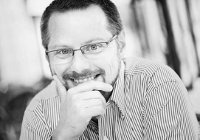
|
BDCAT Keynote: Philippe Cudré-Mauroux, eXascale. Philippe Cudré-Mauroux is a Full Professor and the Director of the eXascale Infolab at the University of Fribourg in Switzerland. He received his Ph.D. from the Swiss Federal Institute of Technology EPFL, where he won both the Doctorate Award and the EPFL Press Mention in 2007. Before joining the University of Fribourg, he worked on information management infrastructures at IBM Watson (NY), Microsoft Research Asia and Silicon Valley, and MIT. He recently won the Verisign Internet Infrastructures Award, a Swiss National Center in Research award, a Google Faculty Research Award, as well as a 2 million Euro grant from the European Research Council. His research interests are in next-generation, Big Data management infrastructures for non-relational data. | Big Data Integration. Until recently, structured (e.g., relational) and unstructured (e.g., textual) data were managed very differently: Structured data was queried declaratively using languages such as SQL, while unstructured data was searched using boolean queries over inverted indices. Today, we witness the rapid emergence of Big Data Integration techniques leveraging knowledge graphs to bridge the gap between different types of contents and integrate both unstructured and structured information more effectively. I will start this talk by giving a few examples of Big Data Integration. I will then describe two recent systems built in my lab and leveraging such techniques: ZenCrowd, a socio-technical platform that automatically connects Web documents to semi-structured entities in a knowledge graph, and Guider, a Big Data Integration system for the cloud. |
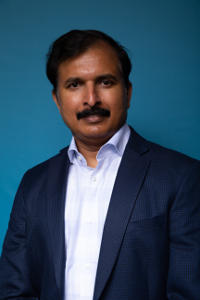
|
BDASE Workshop Invited Speaker: SK Reddy, Hexagon. SK Reddy is the Chief Product Officer AI in Hexagon. He is an AI and ML expert and a successful twice startup entrepreneur. He is an AI startup advisor too. Also he is a frequent speaker in conferences and is an AI blogger. His focus of research is in Image processing, NLP and large data processing using ML and DL. | Predictive maintenance for industry 4.0. Industry 4.0 is driven by digital revolution and digital twins. With the availability of better data, AI techniques could be used to better predict when the machines needs repair/maintenance and also compute the remaining-life of the machine. Machines or vehicles breaking down without notice is costly for factory management and also dangerous for humans operating near these machines. Hence monitoring the machines for potential breakdown is useful. There are around 5000 known statistical techniques that could be used to detect anomalous behavior of machines or vehicles. k-Nearest Neighbors (k-NN), Local Outlier Factor (LOF), Influenced Outlierness (INFLO), Local Outlier Probability (LoOP), Local Correlation Integral (LOCI), Approximate Local Correlation Integral (aLOCI), Cluster Based Local Outlier Factor (CBLOF) including unweighted-CBLOF (uCBLOF), Local Density Cluster-based Outlier Factor (LDCOF), Clustering-based Multivariate Gaussian Outlier Score (CMGOS), Histogram-based Outlier Score (HBOS), One-class Support Vector Machines (ocSVM), Robust Principal Component Analysis (rPCA), etc. are some of them. Deep Learning techniques, independently and in conjunction with machine learning techniques, are further improving the quality of predictions. I will discuss the practical solutions of predicting maintenance needs of machines using machine learning and deep learning. |
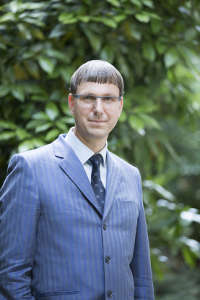
|
Doctoral Research Forum Keynote Speaker: Dirk Helbing, ETH Zurich. Dirk Helbing is Professor of Computational Social Science at the Department of Humanities, Social and Political Sciences and affiliate of the Computer Science Department at ETH Zurich. He studied physics and mathematics at the University of Göttingen and wrote his doctoral thesis at Stuttgart University on modeling social processes by means of game-theoretical approaches, stochastic methods, and complex systems theory. In 1996, he completed further studies on traffic dynamics and optimization. In 2000, he became a full professor and Managing Director of the Institute for Transport and Economics at Dresden University of Technology. Helbing is elected member of the German Academy of Sciences Leopoldina and of the World Academy of Art and Science. In January 2014 he received an honorary PhD from Delft University of Technology (TU Delft). Since June 2015 he is affiliate professor at the faculty of Technology, Policy and Management at TU Delft, where he leads the PhD school "Engineering Social Technologies for a Responsible Digital Future". | The Digital Revolution after Cambridge Analytica. The public discussion around Cambridge Analytica and other scandals have shown that the digital revolution has led us astray. We have ended up in a surveillance capitalism that has turned people into products. Freedom, democracy and human dignity are at stake. The situation becomes even more clear if we look at China with its Social Citizen Score, or if we remember the Karma Police program of the British secret service. The recent fake news pandemics and censorship wave are further threats to our society. So, how can we get the digital transformation on a good path? I will argue that we are now entering the second phase of the digital revolution, and I will present some ideas what may happen next. These developments open up many new opportunities for European countries - they could play a major role in the digitization 2.0. |